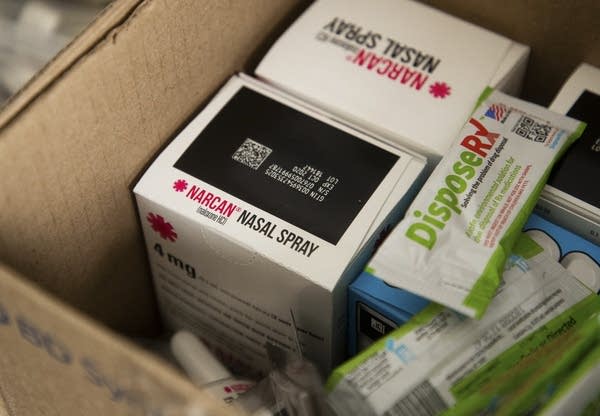Drug overdoses treated in Minnesota hospitals jumped as pandemic worsened

Go Deeper.
Create an account or log in to save stories.
Like this?
Thanks for liking this story! We have added it to a list of your favorite stories.
Even as more people avoided hospital emergency rooms last year to dodge COVID-19 exposure, the number of Minnesotans treated for non-fatal drug overdoses jumped 18 percent from 2019.
More than half of non-fatal overdoses treated at hospitals were caused by opioids, including a big increase in synthetic opioids like fentanyl. But about 43 percent of the patients overdosed on other drugs, including benzodiazepines, antipsychotics and antidepressants.
“The COVID-19 pandemic has been the biggest public health issue in the world for almost two years now, but the other pressing public health issues have not gone away,” Minnesota Department of Health Commissioner Jan Malcolm said in a statement. “The opioid epidemic continues to be pervasive and requires continuing, comprehensive drug overdose prevention and response efforts.”
The analysis by the agency shows that people treated at the ER for non-fatal overdoses are more likely to be younger, male and American Indian or Black. The already stark disparities by race for non-fatal overdoses increased drastically between 2016 and 2020, according to the report.
Turn Up Your Support
MPR News helps you turn down the noise and build shared understanding. Turn up your support for this public resource and keep trusted journalism accessible to all.
”American Indian Minnesotans were nine times more likely than white Minnesota to experience a non-fatal overdose,” said Shelbi Giesel, an epidemiologist with the state. “African American Minnesotans... were more than three times likelier than white Minnesotans to experience a non-fatal overdose.”
The report found that the number of non-fatal overdoses treated at the hospital increased 44 percent between 2016 and last year, although that doesn’t count non-fatal overdoses outside hospitals that weren’t reported. Preliminary numbers from the state say there were 1,008 fatal drug overdoses in 2020, up from 792 the year before.
"It can be really, really easy to focus on drug overdose deaths as being the only impact of the drug overdose crisis on communities,” said Sam Robertson, a community overdose prevention specialist with the department. “This is just a healthy reminder that drug overdose deaths are just the tip of the iceberg."
Street-level advocates are seeing the same challenges for people who use drugs during the pandemic. Marissa Bonnie works with Southside Harm Reduction Services, which provides outreach, clean needles and the anti-overdose medication naloxone in the Twin Cities. She doesn’t see enough resources for people living outside or specifically targeted at people of color or Indigenous people who use drugs.
“Listen to people using drugs,” Bonnie said. “Stigma hits people so hard and puts people in even harder places to seek care.”
It’s hard to tell how much of an impact overdose prevention efforts have had in Minnesota, but Robertson with the health department says that recovery and harm reduction resources like the anti-overdose medication naloxone are still widely available despite the pandemic.


